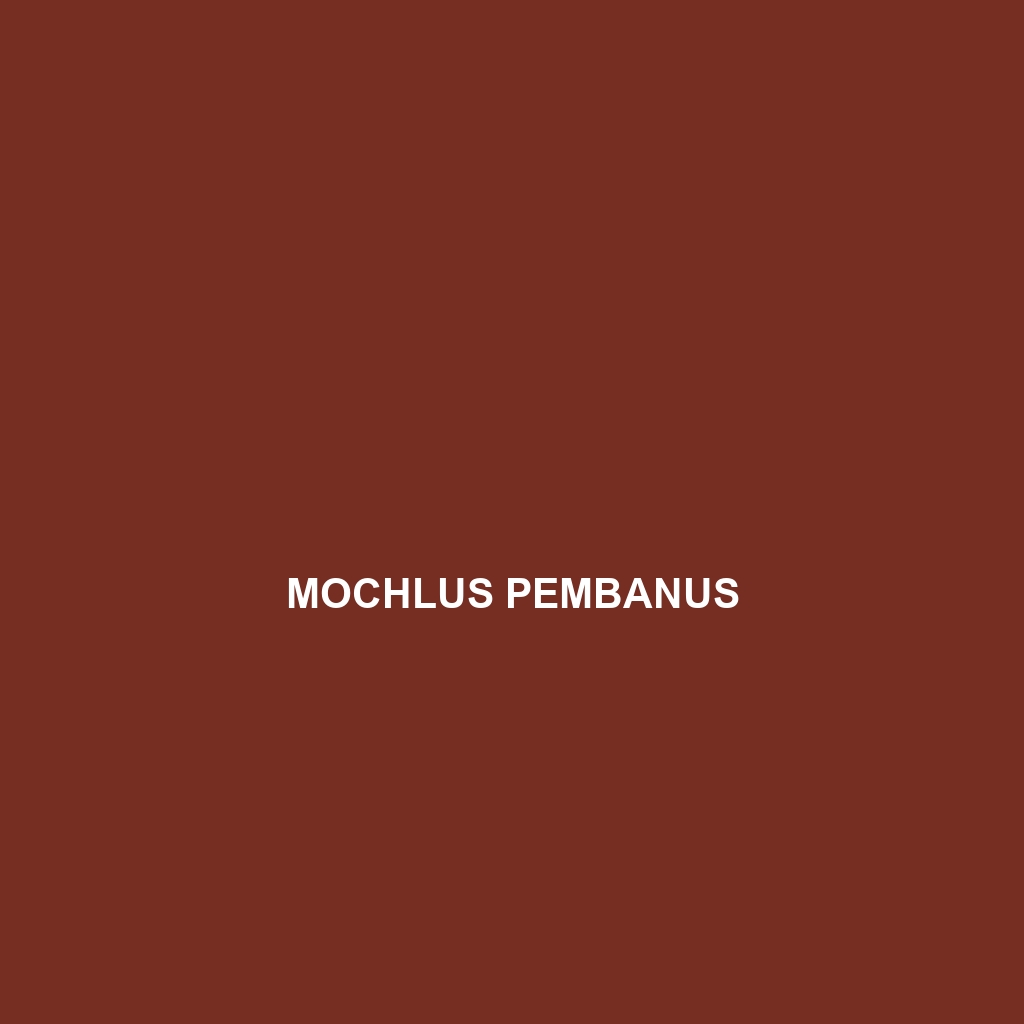Common Name
Mochlus pembanus
Scientific Name
Mochlus pembanus
Habitat
Mochlus pembanus, commonly known as the Pemban skink, is primarily found in the rainforests and savannas of the Pemba Island region in Tanzania, East Africa. This species thrives in a tropical climate characterized by high humidity and consistent rainfall, which are essential for its survival. The skink favors warm, moist environments where it can find ample cover in dense vegetation. Typically, Mochlus pembanus is often spotted in leaf litter, under fallen logs, and among the roots of trees, capitalizing on its camouflage to evade predators and hunt for food. This specific habitat is crucial in shaping its behavior and lifestyle.
Physical Characteristics
Mochlus pembanus is a small to medium-sized skink, with adults typically reaching lengths of approximately 15-25 cm. Its body is elongated and sleek, facilitating swift movement through its forest floor habitat. The skin is smooth and glossy, exhibiting a striking color palette that ranges from dark brown to olive green, often with lighter stripes running along its body. This adaptive coloration not only provides effective camouflage but also helps regulate body temperature in its humid environment. The skink possesses a distinct long tail that can be shed when threatened, allowing a quick escape less hampered by predators.
Behavior
The behavior of Mochlus pembanus includes notable aspects such as their diurnal activity, where they are mostly active during the day. These skinks exhibit a mix of solitary and social behaviors; they can often be seen basking in the sun while also engaging in social interactions during mating periods. Their inquisitive nature is evident in their exploratory behavior, which includes climbing and burrowing. Furthermore, this species demonstrates unique habits, such as their ability to quickly blend into their environment while hunting for insects and small invertebrates. Interestingly, Mochlus pembanus also participates in elaborate mating rituals that involve displays of agility and vibrant movements to attract potential mates.
Diet
Reproduction
The reproductive cycle of Mochlus pembanus is marked by a seasonal pattern, typically coinciding with the rainy season, which provides a plentiful resource environment for their offspring. Mating rituals can be observed during the late afternoon as males engage in displays of strength and agility to attract females. After successful mating, females lay a clutch of eggs, usually ranging from 4 to 8, in sheltered locations to provide protection against predators. The incubation period lasts about 60 days, after which neonates hatch with fully formed and functional bodies, ready to fend for themselves. Parental care is minimal, as the young are independent at birth.
Conservation Status
Currently, Mochlus pembanus is listed as vulnerable due to habitat loss and degradation caused by deforestation and agricultural expansion on Pemba Island. Conservation efforts are underway, focusing on habitat preservation and raising awareness about the ecological significance of this species. Protection of their forest habitats is critical to ensuring the survival of Mochlus pembanus, and ongoing field studies aim to better understand their population dynamics and mitigate threats against them.
Interesting Facts
One fascinating aspect of Mochlus pembanus is its remarkable ability to change its coloration slightly in response to environmental conditions, assisting in thermal regulation and camouflage from predators. Additionally, while many skinks lead a fairly sedentary lifestyle, the Pemban skink exhibits notable agility, capable of rapid movements when escaping threats. Instead of retreating into hiding spots immediately, they often perform quick dashes or erratic movements, making them difficult targets for predators.
Role in Ecosystem
Mochlus pembanus plays a significant role in its ecosystem as both a predator and prey species. By controlling insect populations, these skinks contribute to a balanced food web within their rainforest habitat. They serve as a food source for larger predators, such as birds and snakes, and their presence indicates a healthy ecosystem. Moreover, as they move through the leaf litter, they assist in aerating the soil and promoting nutrient recycling, contributing to overall ecosystem health and sustainability.
